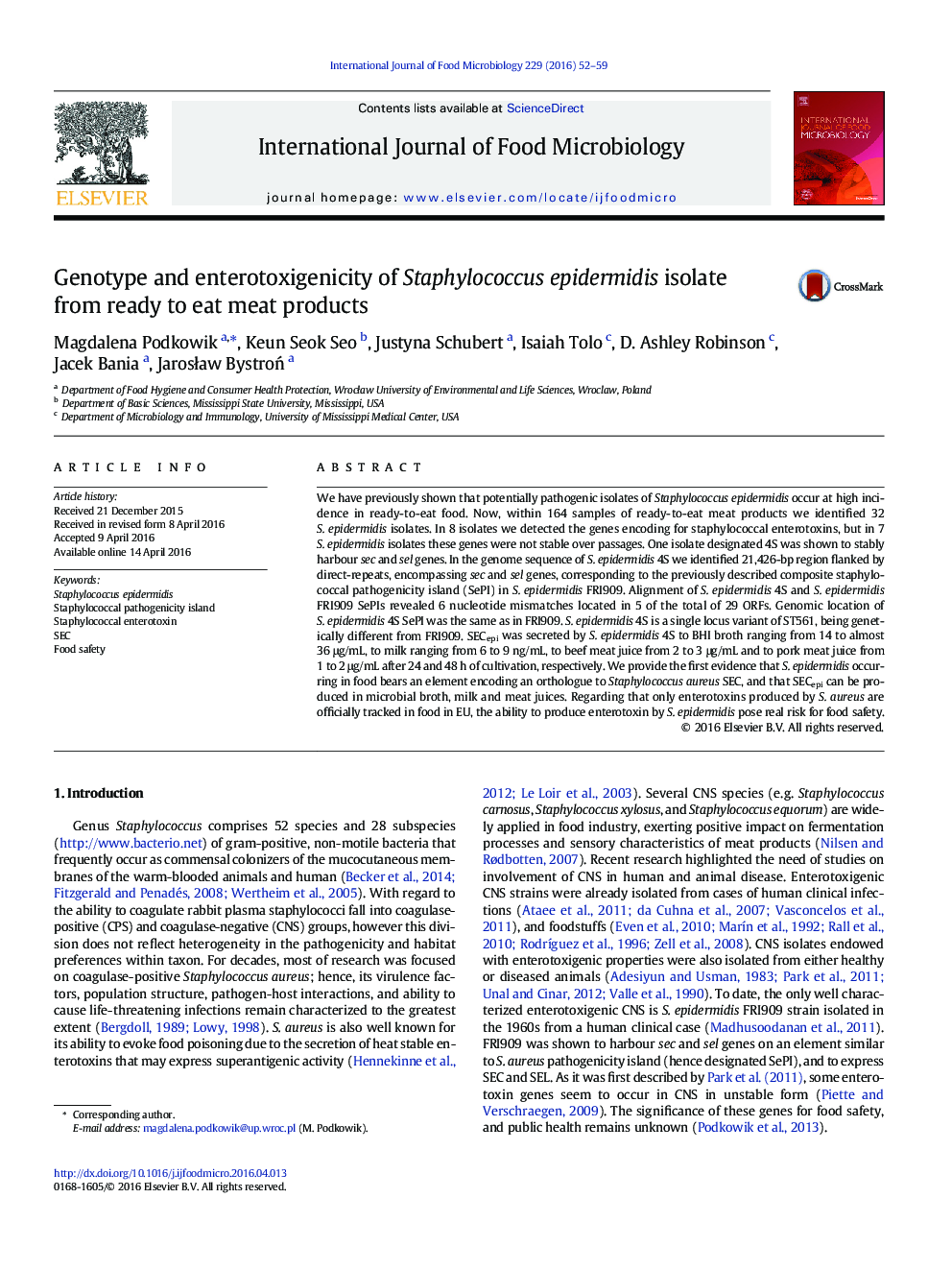| Article ID | Journal | Published Year | Pages | File Type |
|---|---|---|---|---|
| 4366293 | International Journal of Food Microbiology | 2016 | 8 Pages |
•Staphylococcus epidermidis 4S isolate from food stably harbour sec and sel genes•Enterotoxin genes are on staphylococcal pathogenicity island in S. epidermidis 4S.•Genomic location of S. epidermidis 4S SePI is the same as in S. epidermidis FRI909.•S. epidermidis 4S is genetically different from S. epidermidis FRI909.•SECepi is secreted by S. epidermidis 4S to milk, meat juice and to microbial broth.
We have previously shown that potentially pathogenic isolates of Staphylococcus epidermidis occur at high incidence in ready-to-eat food. Now, within 164 samples of ready-to-eat meat products we identified 32 S. epidermidis isolates. In 8 isolates we detected the genes encoding for staphylococcal enterotoxins, but in 7 S. epidermidis isolates these genes were not stable over passages. One isolate designated 4S was shown to stably harbour sec and sel genes. In the genome sequence of S. epidermidis 4S we identified 21,426-bp region flanked by direct-repeats, encompassing sec and sel genes, corresponding to the previously described composite staphylococcal pathogenicity island (SePI) in S. epidermidis FRI909. Alignment of S. epidermidis 4S and S. epidermidis FRI909 SePIs revealed 6 nucleotide mismatches located in 5 of the total of 29 ORFs. Genomic location of S. epidermidis 4S SePI was the same as in FRI909. S. epidermidis 4S is a single locus variant of ST561, being genetically different from FRI909. SECepi was secreted by S. epidermidis 4S to BHI broth ranging from 14 to almost 36 μg/mL, to milk ranging from 6 to 9 ng/mL, to beef meat juice from 2 to 3 μg/mL and to pork meat juice from 1 to 2 μg/mL after 24 and 48 h of cultivation, respectively. We provide the first evidence that S. epidermidis occurring in food bears an element encoding an orthologue to Staphylococcus aureus SEC, and that SECepi can be produced in microbial broth, milk and meat juices. Regarding that only enterotoxins produced by S. aureus are officially tracked in food in EU, the ability to produce enterotoxin by S. epidermidis pose real risk for food safety.
